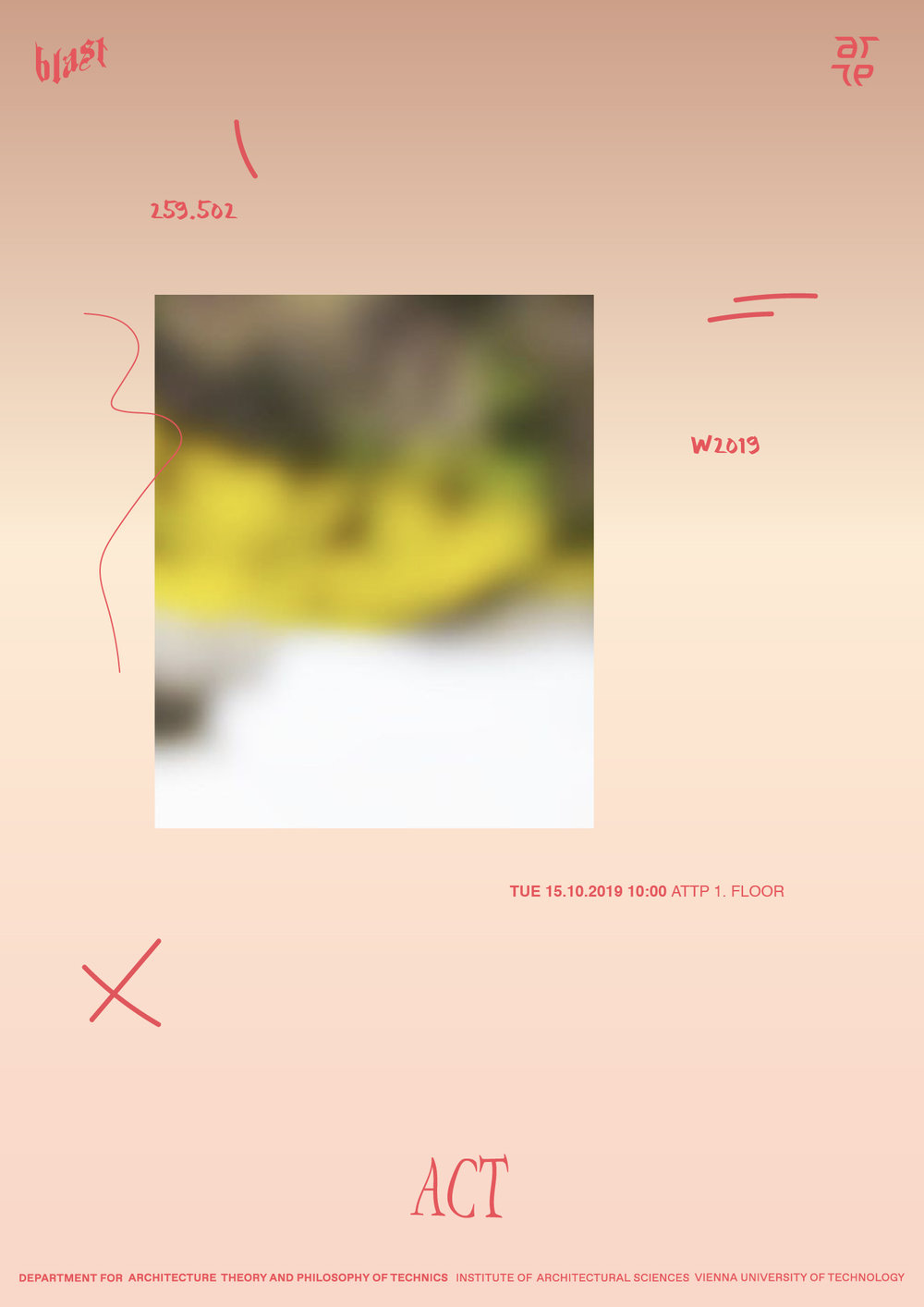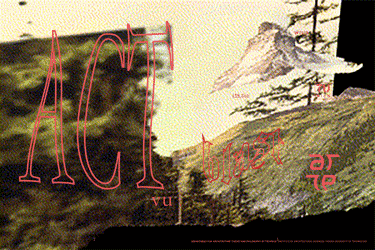After successful completion of the course, students are able to develop new formats and ways of architectonic thinking that encompass not only dealing with two dimensional drawings and paintings but also the sculptoric gesture of arraying such things in a constellation of distances. Additionally, students will acquire basic tools on how to render animations and specific guidance on how to deal with images and other visual contents.

Each student will produce one image.
Such an image should be considered an image of nothing but the effective keeping of distance.
And one text.
Such a text should be considered a written form of the image which is not euphoric and not descriptive. The minimum text submitted should be a title.
On the keeping of distance.
This semester we will ascertain distance (— just not geometrically), and pixels (— just not colouring), and act(— take action)upon its architectonics to question what is inherent in the representation of things — those which are on the raster screen and on the picture plane and on the imagination.

If to look at everything from above is an act of sabotage of terrestrial laws— the unique relationships between the house, the mountain, the basement, the cornice are all lines joined at altitude — perhaps to look up on the skies could be the precisely the contrary : only ever addressed projectively upon the spheric celestial, the sky can be seen as space in between and cosmic distances only measurable in scales of time; all lines joined at constellations.
Distances between such bodies, together with planets and moons, can be registered through their relative position amongst calculations that ultimately allow us to make a distinction between a foreground and a background —following the method called parallax measuring—. The absence of any depth or physical distancebetween the measured would present identical pictures in time after displacing our observatory; the effect of parallax is then the observed apparent change in the position of an object resulting from a change in the position of the viewer. Therefore, through distance we will address stillness and motion.
Perhaps the least familiar of the half dozen or so terms used by William Gilpin (1792, Three Essays: On Picturesque Beauty; On Picturesque Travel; and On Sketching Landscape: To Which Is Added A Poem, On Landscape Painting) to define the picturesque is keeping. Occasionally compared to aerial perspective, keepingrefers to the representation of distance and depth inimages. For a picture to be considered picturesque, in Gilpin’s terms, it has to produce the effect of keeping distancebetween objects in a painting, as the composition moves from front to back and from one object to the next. Keepingcan be achieved not by the absence of detail but by displacement and obfuscation of detail through processes of addition and erasure.
This course is an active part in composing a report on the architectonic image. It is aimed to students which interests also deal with images and text in the form of edition and editorial. Each student will produce one image. Such an image should be considered an image of nothing but the effective keeping of distance. And one text. Such a text should be considered a written form of the image which is not euphoric and not descriptive. The minimum text submitted should be a title.
Course Materials
An image bank would be provided, as well as text excerpts and layout examples. Adobe programs After Effects, Illustrator and Photoshop would be used as software but proficiency is not required. Licenses for such software would not be provided.
Language
The course will be provided in English and so is the preferred language for all other communications.
Submitting all completed exercises is mandatory to be considered eligible for grading. Attendance and participation to all sessions is required.
There will be a publication in the style of previous numbers on the ‘Mobile Yet Immobile Series’ by G. Fassl.